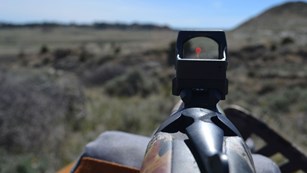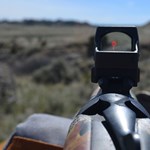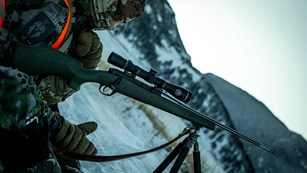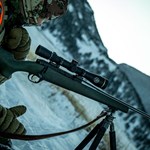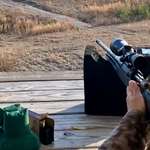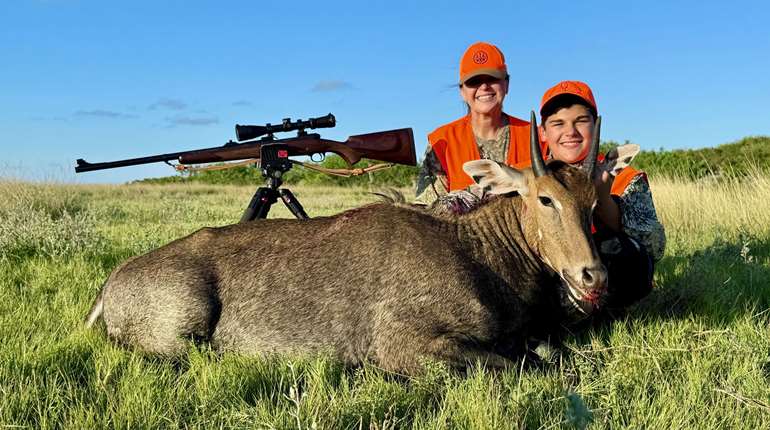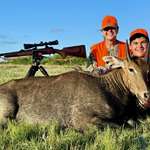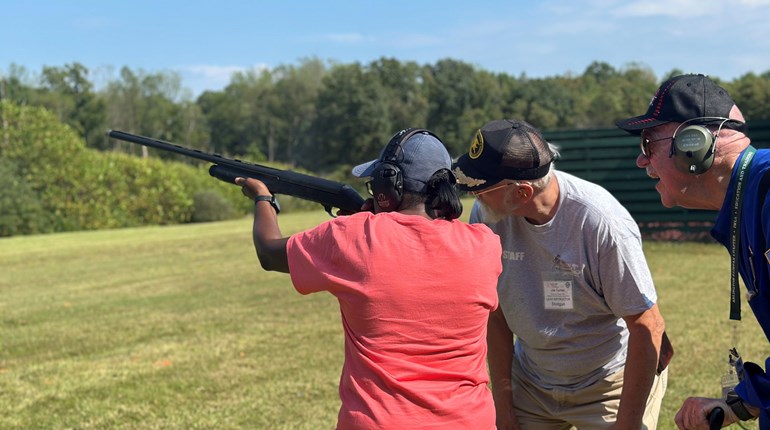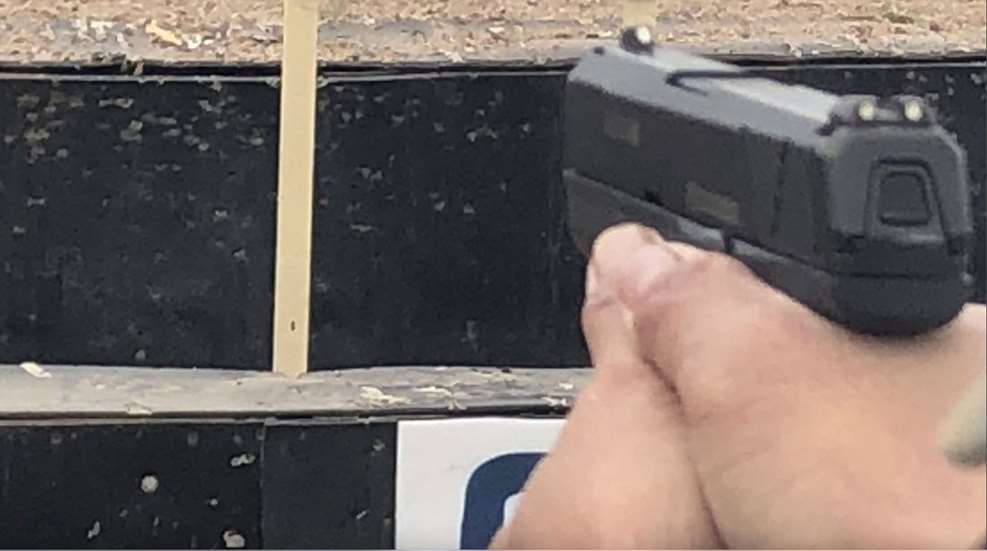
Most of us didn’t really learn how to shoot properly until we were fairly deep into our shooting journeys. In my case, Dad taught me to shoot when I was young, but he was no instructor—just an enthusiast who was passionate about firearms and gun safety. Heck, he still shoots a handgun with his support hand gripping his firing-arm wrist! Those of us who learned to shoot from people who handed us a gun, gave us a safety lecture and then let us figure out the grip, stance and form on our own have a tendency to hang on to some bad habits that we learned because no one ever taught us any better. Are you struggling with any of these bad habits it’s time to break?
1. Leaning Back
This is most commonly seen with shotguns, because we shoot them standing up with no support, but it also happens with rifles shot off-hand and with handguns. When we hold a heavy object far out in front of us, our arms tire quickly, and we naturally want to lean back at the waist to compensate—it helps our body feel that we’re balancing out that weight. A new shooter will almost certainly lean back like this unless someone teaches them not to.
Why is this bad? It is not a stable shooting position, and recoil will push your upper body back farther and farther with each shot. You can manage recoil better if you use a proper shooting stance. There are several to choose from, but they all involve bending forward slightly at the waist.

2. Focusing on the Wrong Thing
When shooting targets, we want to look at the target—it’s a natural human tendency, particularly if the target is moving. This works well in wing-shooting with shotguns, but with rifles and handguns, it’s going to lead to accuracy problems. Instead, focus on your sight—your front sight or red dot on a handgun, your reticle on a scoped rifle—and let the target exist sort of blurry in the background. This is a hard habit to break, and I still remind myself “front sight” when I’m shooting handguns.
3. Poor Trigger Finger Placement
You want the trigger centered on the pad of your index finger, halfway between the fingertip and the first knuckle. This lets you pull the trigger straight back, not to either side. If you’re never taught this, you might very well be using a different part of your finger each time, and that leads to accuracy problems—particularly with handguns. If you don’t have enough finger on the trigger (you’re using the very tip of your finger), you’ll shoot to the left of where you’re aiming. If you have too much finger on the trigger (it settles almost in the crease of the first knuckle), you’ll shoot to the right of where you’re aiming. In both cases, the finger is exerting pressure that’s moving the gun to one side or the other with each trigger pull.
4. Anticipating the Shot
It’s human nature to shirk away from loud noises and pain or stimulus, such as the report and recoil of a firearm. Since your body knows it’s about to experience a push and a loud bang when you’re done squeezing the trigger, it has a tendency to start the shirking-away process before the shot is finished. This leads to all sorts of problems, from pushing a handgun away from you to jerking your head off a rifle stock and more—all of which involve moving the gun just before it goes off or as it’s firing. Gun movement means your sights are no longer where you thought they were, and your hits will be all over the place.
Not only do you want to stop anticipating the shot, but you want to train yourself not to react to it at all, which is our next point.
5. Failing to Follow Through
Again, because of noise and recoil, new shooters will subconsciously want to get away from the gun, and on top of that, they want to see if they hit their target. Both of these lead to head lifting. It’s also a natural tendency to come off the trigger immediately after the shot breaks, but neither of these habits are conducive to accurate shooting. If you’re in this habit (either one), it’s time to work on your follow-through.
Good follow-through lets the gun remain still through the shot and readies you to take a second shot as quickly as possible should you need to or want to. Immediate follow-though has two primary components: Reacquiring the sight picture and resetting the trigger. When the shot breaks, keep your head in the same position it was in and immediately get your sights back on target just like they were before you took the shot (this applies to handguns as well as rifles). At the same time, when you squeeze the trigger, do not let go of it—keep the trigger pressed to the rear for just a moment to ensure you don’t introduce movement into the gun before the bullet has left the barrel. Then you can lighten up pressure on the trigger until you feel it reset. By this point, you’ve reacquired your sight picture well enough to know if you need to shoot again or not. If you do, you’re ready. If not, you can come off the trigger.
6. Rushing Yourself
Don’t hurry! This is a tough one for me—I tend to put pressure on myself to shoot quickly, even when there’s no time limit and no reason to rush. And for me, rushing leads to missing. I have cleanly missed animals in the field because I rushed myself into a shot when I had plenty of time to settle and do it properly. This is a detrimental habit I can’t seem to completely shake, and now I deliberately remind myself “take your time!” when I’m setting up a shot on a big-game animal.
When you’re standing at the firing line of your local range and everyone around you is dumping entire mags in the time it takes you to get off two shots, especially if you’re with friends, it’s easy to start thinking, “I’m so slow! I should be firing at their pace!” But hurrying leads to sloppiness, which leads to nothing good in the accuracy department.
Take as much time as you need to get off just one good shot that you really feel great about. You’ll naturally get faster and faster as you get the fundamentals down, and at that point, you can work on your speed (which is actually important in hunting and in self-defense shooting). Meanwhile, don’t rush yourself at the range.


